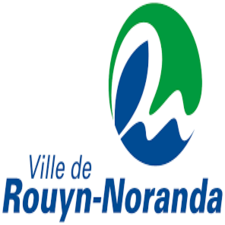Marais
Type of resources
Topics
Keywords
Contact for the resource
Provided by
Years
Formats
Representation types
Update frequencies
status
Service types
-

Set of wetlands in the City of Rouyn-Noranda **This third party metadata element was translated using an automated translation tool (Amazon Translate).**
-

Surface hydrographic network of the City of Rouyn-Noranda **This third party metadata element was translated using an automated translation tool (Amazon Translate).**
-

This data set contains the polygons delimiting the wetlands of the Montreal agglomeration. These were updated as part of the development of the [Regional Plan for Humid and Hydric Environments (PRMHH)] (https://montreal.ca/articles/un-plan-pour-proteger-les-milieux-humides-et-hydriques-67104) for the agglomeration of Montreal. They illustrate the wetlands, the type of environment and the conservation choices that have been assigned to them to meet the objectives of the Regional Plan. A visualization of the data is possible on the [interactive map] (https://experience.arcgis.com/experience/87e6da34dc3348a1a5e3f1014c266242) associated with the PRMHH. **This third party metadata element was translated using an automated translation tool (Amazon Translate).**
-

This data set contains the routes of watercourses (stream, river) and main ditches in the agglomeration of Montreal. These were updated as part of the development of the [Regional Plan for Humid and Hydric Environments (PRMHH)] (https://montreal.ca/articles/un-plan-pour-proteger-les-milieux-humides-et-hydriques-67104) for the agglomeration of Montreal. A visualization of the data is possible on the [interactive map] (https://experience.arcgis.com/experience/87e6da34dc3348a1a5e3f1014c266242) associated with the PRMHH. **This third party metadata element was translated using an automated translation tool (Amazon Translate).**
-

The 2023 mapping of potential wetlands in Quebec (CMHPQ) 2023, released by the Directorate of Ecological Knowledge (DCE), provides up-to-date information on the potential presence of wetlands for the entire province of Quebec. In particular, version 2023 contains the classification of potentially humid geographical entities according to a selected typology and the assignment of a level of confidence associated with each entity and integrates new data sources. This mapping is an aggregation of different databases produced for other purposes and at different scales. The result of this assembly depends on the precision and accuracy of each of the data sources used. These data must be used while remaining vigilant with regard to their potential and limitations.**This third party metadata element was translated using an automated translation tool (Amazon Translate).**
-

Potential wetlands on the territory of the city of Lévis**This third party metadata element was translated using an automated translation tool (Amazon Translate).**
-

Territory where the interim control by-law relating to the conservation of natural environments (RV3535) applies to the City of Lévis. **This third party metadata element was translated using an automated translation tool (Amazon Translate).**
-

The Planning for an Environmental Response (PIER) initiative falls under the umbrella of the Government of Canada's Oceans Protection Plan (OPP), whose goal is preserving marine ecosystems vulnerable to increased transportation and the development of the marine industry (https://pm.gc.ca/en/news/backgrounders/2016/11/07/canadas-oceans-protection-plan-preserving-and-restoring-canadas). The PIER was established in response to recommendations made in a 2013 report "A review of Canada's ship-source spill preparedness and response regime " by the Tanker Safety Expert Panel (https://tc.canada.ca/en/marine-transportation/marine-safety/tanker-safety-expert-panel). One of the recommendations calls on Fisheries and Oceans (DFO) to work with Environment and Climate Change Canada (ECCC) to collect and compile information on sensitive species and environments for each Canadian Coast Guard (CCG) response area and make it publicly available. The PIERs’ main mandate is to acquire and update biological sensitivity data under its jurisdiction for preparation and response purposes in the event of an oil spill. With DFO-Science, PIER supports ECCC's National Environmental Emergencies Centre (NEEC) and the CCG in their preparations and responses through the sharing of data on biological sensitivities, the development of response tools and expert advice. In this vein, DFO published an analysis in 2018 that aimed to identify the most vulnerable components of the St. Lawrence in order to prioritize them during data collection if gaps were identified (Desjardins et al. 2018). This exercise highlighted the vulnerability of several biological components and important data gaps, particularly in coastal areas. As a result of this finding, the Quebec region PIEI team embarked on a collaborative project with the Université du Québec à Rimouski (UQAR) to map eelgrass beds, tidal marshes and macroalgal beds. In consultation with other DFO-Science data producers, this team has also created datasets adapted for response purposes, notably regarding bivalves and marine mammals. These layers may be used for oil spill preparedness and response by DFO-Quebec Region's Environmental Incident Coordinator, NEEC and CCG. Several of them, deemed relevant in the first 72 hours following a spill, have been transmitted to the NEEC.
-
WMS service maintained by ECCC. Map of Upper Intertidal shoreline segmentation with Shoreline Cleanup Assessment Teams (SCAT) classification. Segmentation covers shorelines for Northern Canada, the North coast of British Columbia, as well as Ontario, QC, and Atlantic regions.
-
WMS service maintained by ECCC. Map of Upper Intertidal shoreline segmentation with Shoreline Cleanup Assessment Teams (SCAT) classification. Segmentation covers shorelines for Northern Canada, the North coast of British Columbia, as well as Ontario, QC, and Atlantic regions.
 Arctic SDI catalogue
Arctic SDI catalogue